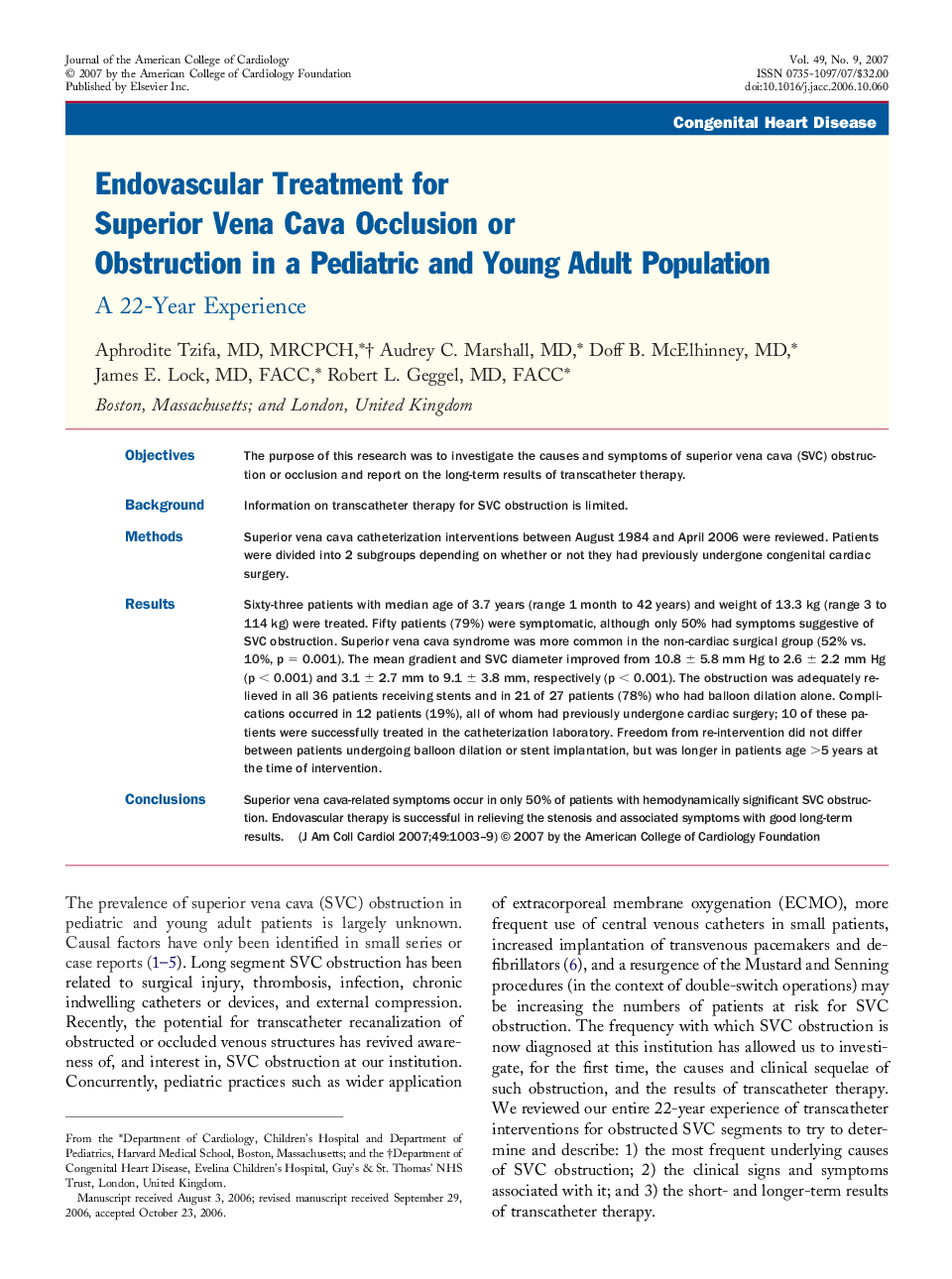| Article ID | Journal | Published Year | Pages | File Type |
|---|---|---|---|---|
| 2954576 | Journal of the American College of Cardiology | 2007 | 7 Pages |
ObjectivesThe purpose of this research was to investigate the causes and symptoms of superior vena cava (SVC) obstruction or occlusion and report on the long-term results of transcatheter therapy.BackgroundInformation on transcatheter therapy for SVC obstruction is limited.MethodsSuperior vena cava catheterization interventions between August 1984 and April 2006 were reviewed. Patients were divided into 2 subgroups depending on whether or not they had previously undergone congenital cardiac surgery.ResultsSixty-three patients with median age of 3.7 years (range 1 month to 42 years) and weight of 13.3 kg (range 3 to 114 kg) were treated. Fifty patients (79%) were symptomatic, although only 50% had symptoms suggestive of SVC obstruction. Superior vena cava syndrome was more common in the non-cardiac surgical group (52% vs. 10%, p = 0.001). The mean gradient and SVC diameter improved from 10.8 ± 5.8 mm Hg to 2.6 ± 2.2 mm Hg (p < 0.001) and 3.1 ± 2.7 mm to 9.1 ± 3.8 mm, respectively (p < 0.001). The obstruction was adequately relieved in all 36 patients receiving stents and in 21 of 27 patients (78%) who had balloon dilation alone. Complications occurred in 12 patients (19%), all of whom had previously undergone cardiac surgery; 10 of these patients were successfully treated in the catheterization laboratory. Freedom from re-intervention did not differ between patients undergoing balloon dilation or stent implantation, but was longer in patients age >5 years at the time of intervention.ConclusionsSuperior vena cava-related symptoms occur in only 50% of patients with hemodynamically significant SVC obstruction. Endovascular therapy is successful in relieving the stenosis and associated symptoms with good long-term results.
